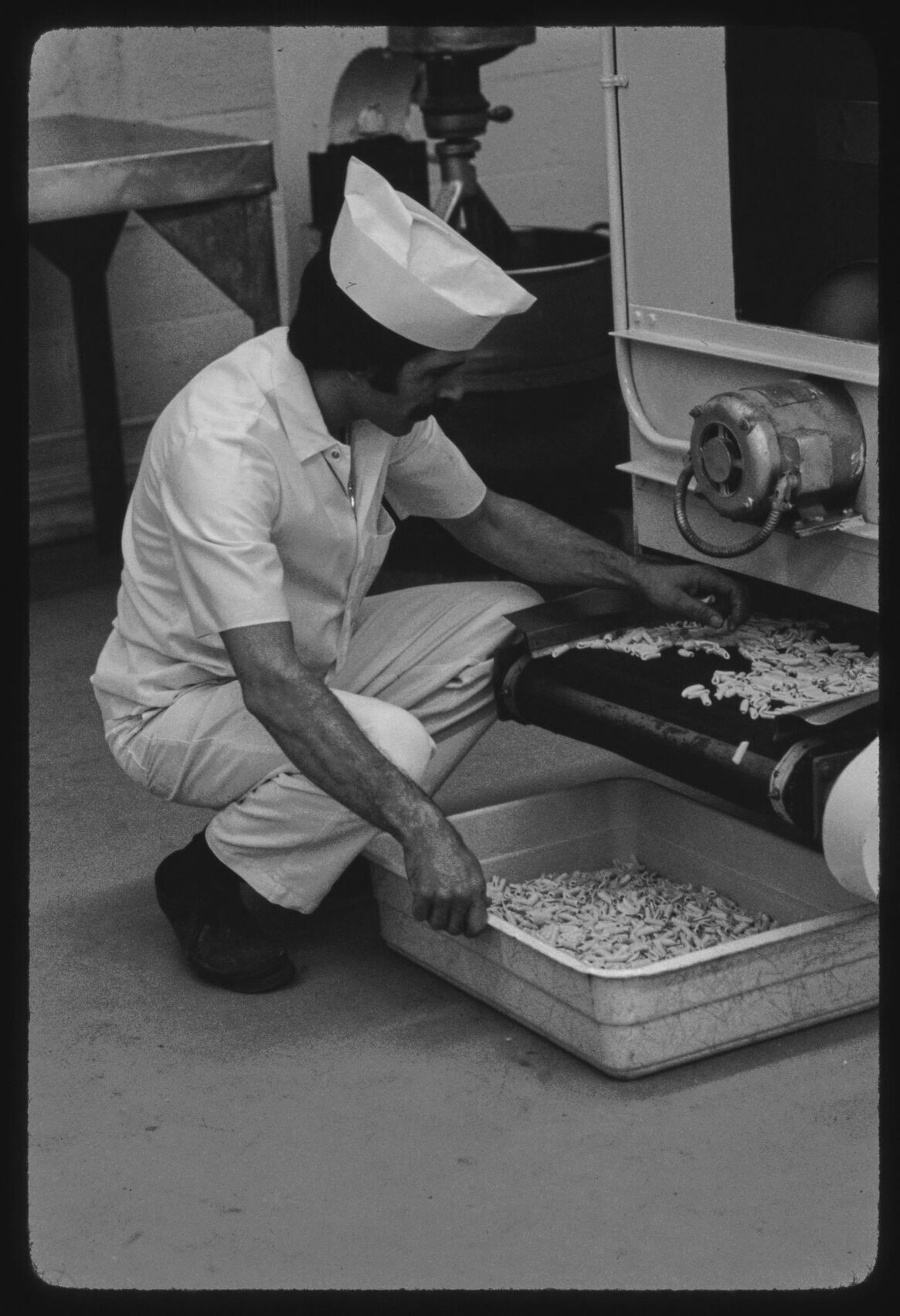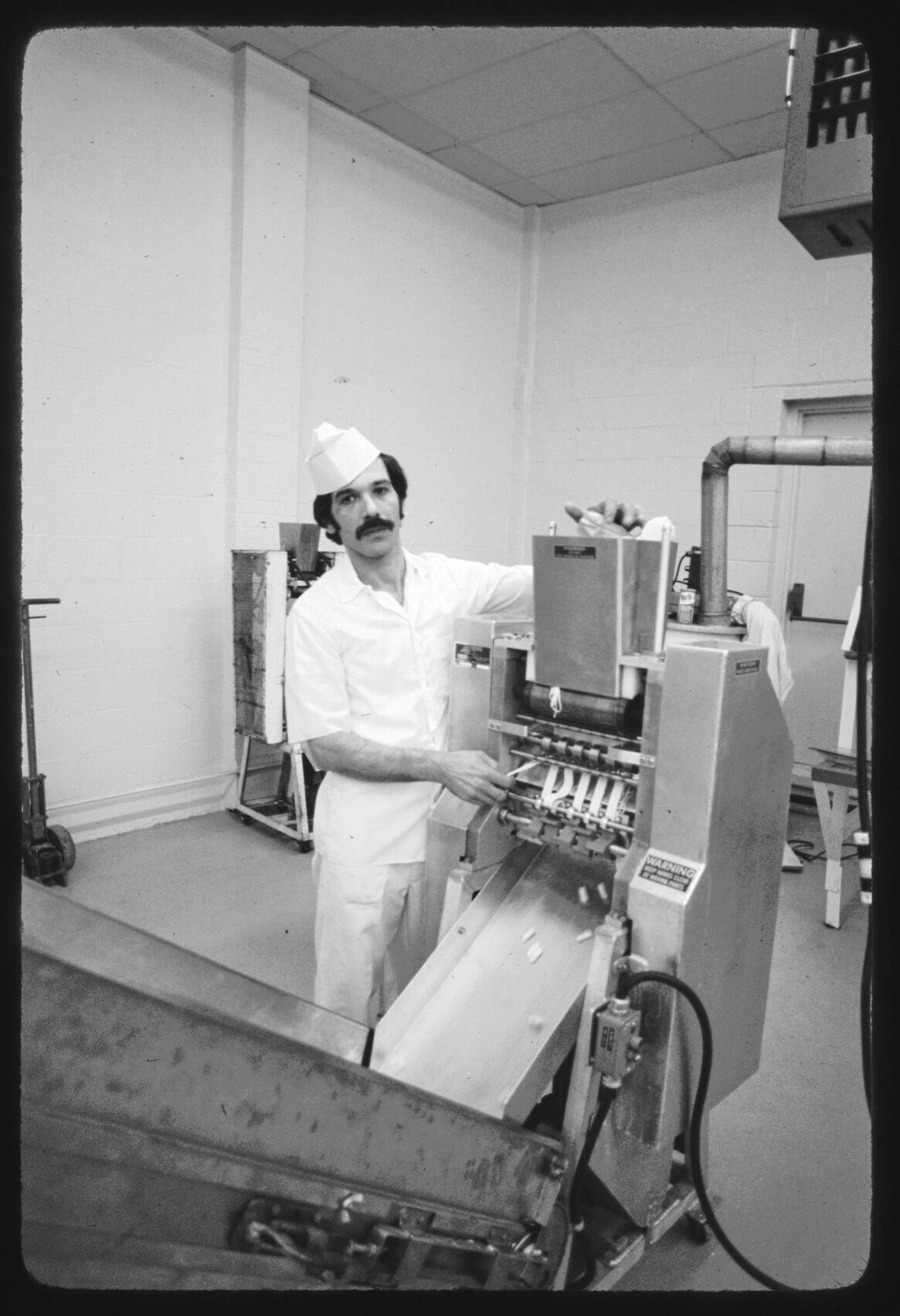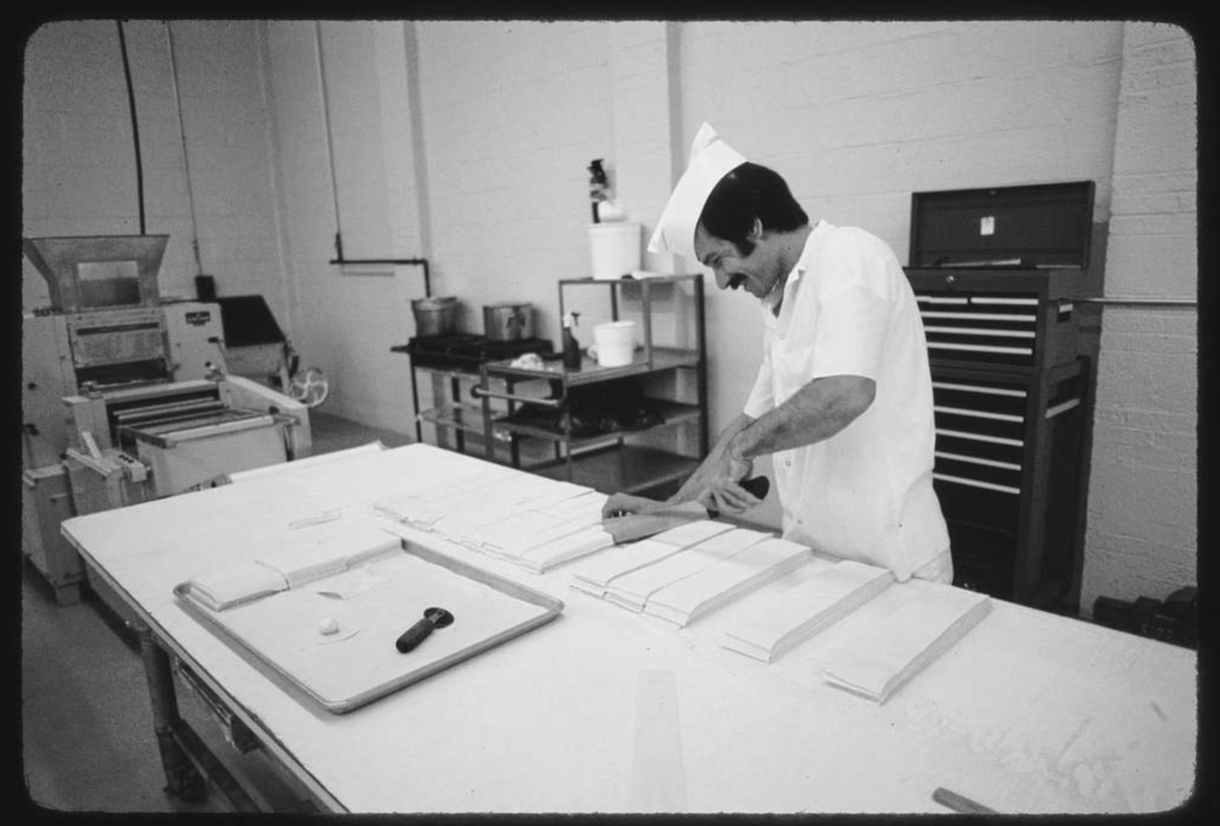
The storefront is not so humble as in 1928 when Carlo Venda landed in Providence from Catania, the
pasta capital of Sicily, with little else but an entrepreneurial spirit. But the business he created, Venda
Ravioli, remains the anchor of DePasquale Piazza, the heart of the Italian enclave here known as Federal
Hill.
The company has expanded, both in distribution and employees, but it remains founded in the artisanal
skill of shaping locally raised eggs, fresh ricotta, a bit of herbs and salt, into delightful pillows of dough.
“It all starts with the ingredients. Just as our ancestors valued decades ago, we really feel the secrets to
quality, homemade pasta are the rudiments, the flour and the combination of imported cheeses, ricotta
and pecorino paglierino. It may sound simple, but it’s really so essential in producing the perfect ravioli,”
says owner Alan Costantino who, along with his family, purchased the business in 1972. The store, which
occupies an entire corner of Atwells Avenue now, features not only an assortment of pasta but also
authentic Italian sausages, veal cutlets, and “Maria’s Picos Olives.”


A worker at the Venda Ravioli Inc. pasta plant in Providence, Rhode Island, 1979 (Michael Edward Bell, photographer)
The ravioli remain the core product, and at dawn, packages of lobster, prosciutto, and mushroom
versions fill Venda’s display cases. The one hundred employees now help ship the ravioli and other
products to a dozen distributors across the northeast.
Ravioli dates to the 14th century when, as legend has it, a merchant of Tuscany, Francesco di Marco
Datini, introduced Italy to “ravioli al brodo”, literally meaning “ravioli with broth”. Datini wrote about
this preparation of the pasta and the origin of the term ravioli, coming from riavvolgere, Italian for “to
wrap”, in his early manuscripts. Later in sixteenth century Rome, Bartolomeo Scappi outlined several
recipes for the pasta and his experience serving them to the papal concave in his 1570 cookery treatise
Opera. Surprisingly, ravioli was not served in tomato sauce until the late sixteenth century when
tomatoes were first introduced to Italy from the New World. Adding meat, such as capon (rooster) and
lobster, to the ravioli was not popular until the eighteenth century when trade between continents
became more common. In fact, lobster and crab ravioli became a staple in the Amalfi Coast where the
creatures of the sea are abundant.
At Venda, they employ a unique pasta-making technique using imported ricotta cheese, and diverse
flavors, such as roasted Italian red pepper and squid ink. The “Venda way” is preparing ravioli with
chopped blanched green herbs, fresh cheese, a beaten egg, and simmered in broth.
“At Venda, we’re deeply rooted in tradition. Each dish tells a story of the past and is a connection to our
ancestors. Our ravioli prepared in broth is a perfect representation of this connection and portal to the
past,” explains Anthony Chiero, Executive Chef at Costantino’s Venda Ristorante.
Now with their own pasta plant, Venda Ravioli sells about one million ravioli per year among five
hundred thousand boxes of pasta yearly, according to the National Pasta Association. However, despite
its achievements and expansions, Venda is still a hub for traditionalists. At noon, busy professionals stop
by for a quick lunch, and at 6pm, the shop is packed with visitors looking for a grab-and-go meal. When
the bustle subdues, you can hear loyal customers speak Italian, greeting employees by name as if they
are family. Italian energy is still alive and well on Federal Hill and Rhode Island, and Venda is the center.
What started out as a mere “mom and pop” boutique in Providence’s own “Little Italy” has blossomed
into a food emporium known as the “umbilical cord to Italy”.
Venda’s Lobster Ravioli in a Pink Vodka Sauce with Shrimp.
Yield: serves 4
Total Time: 1 hour
Pasta Dough
- 2 cups all-purpose flour
- 1 teaspoon salt
- 4 large eggs
- 2 tablespoons olive oil
Lobster Filling
- 1/4 cup olive oil
- 2 cloves garlic, minced
- 1/4 cup fresh parsley, chopped
- 1 teaspoon lemon juice
- 3 lobster tails, peeled, cooked, and diced
- 1/2 teaspoon salt
- 1/2 teaspoon ground black pepper
- 1 cup whole milk ricotta cheese
- 1/4 cup pecorino paglierino cheese
Pink Vodka Sauce with Shrimp
- 3 tablespoons olive oil
- 2 tablespoons unsalted butter
- 3 cloves garlic, minced
- 1 cup vodka
- 3 cups chicken stock
- 3 cups heavy cream
- 1 teaspoon salt
- 1 teaspoon ground black pepper
- 1/4 pound uncooked, peeled shrimp
- 1 cup marinara sauce
- 3/4 cup pecorino romano cheese
- 1/2 cup fresh basil, chopped
- To make the pasta dough, whisk together the flour and salt in a large bowl. Make a well in the center of
the flour, and add three of the four eggs to the center. Mix the eggs into the flour until fully
incorporated. Add the olive oil, and knead the dough for 5 minutes. Roll the dough into a ball, cover with
plastic wrap, and allow it to sit at room temperature for 30 minutes. - Meanwhile, prepare the lobster filling. Heat the olive oil in a medium-sized saucepan over medium-low
heat. Add in the garlic, and sautée until fragrant. Once fragrant, add in the parsley, lemon juice, diced
lobster, salt, and pepper. Remove from heat, and mix in the ricotta and pecorino paglierino. - Roll the pasta dough into lasagna sheets using a pasta machine or rolling pin. Place about 1 tablespoon
of filling one inch apart over half the pasta sheet. Beat the remaining egg, and brush the edges with the
beaten egg. Fold the sheet over the filling, pressing down on the edges to seal. Cut the ravioli into
squares, and repeat with the remaining dough and filling. Boil water in a saucepan over medium heat.
Drop in the ravioli, and cook until they have risen to the top. While they are cooking, prepare the sauce. - Roll the pasta dough into lasagna sheets using a pasta machine or rolling pin. Place about 1 tablespoon
of filling one inch apart over half the pasta sheet. Beat the remaining egg, and brush the edges with the
beaten egg. Fold the sheet over the filling, pressing down on the edges to seal. Cut the ravioli into
squares, and repeat with the remaining dough and filling. Boil water in a saucepan over medium heat.
Drop in the ravioli, and cook until they have risen to the top. While they are cooking, prepare the sauce. - To make the pink vodka sauce, in a large saucepan over medium-low heat, add the olive oil, butter, and
garlic, and sautée until the garlic is fragrant and slightly golden brown. Remove from heat, and stir in the
vodka. Place back on heat, and allow the alcohol to reduce out a bit, about 30 seconds. Add in the
chicken stock and heavy cream, and allow the mixture to reduce to about half. Add in the salt, pepper,
and shrimp, and cook until the shrimp is pink and fully cooked. Stir in the marinara sauce, romano
cheese, and basil. - Drain the ravioli once finished cooking, and add them to the sauce. Cook the ravioli in the sauce on low
heat for about 1 minute. Serve fresh, and enjoy!
